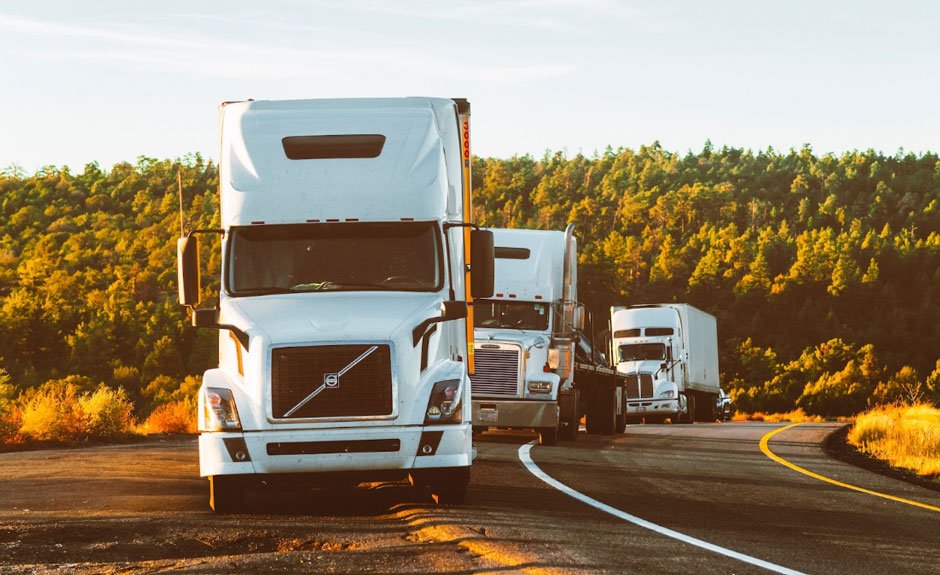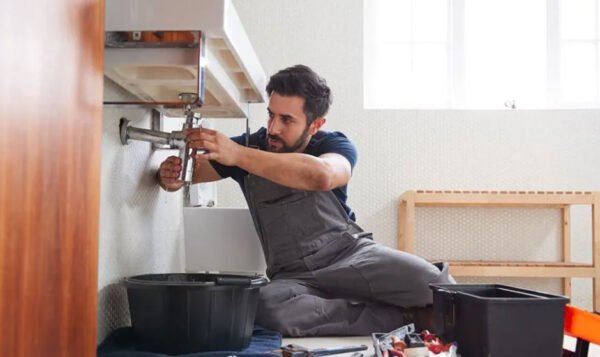Towing Heavy Equipment: A Guide For Construction And Industrial Professionals

Are you an industrial or construction professional looking for a comprehensive guide to towing heavy equipment? Moving oversized and bulky loads requires specialized towing skills.
This blog post, written by a team member of Towing Tucson (you can check out our company website here) will help you understand the necessary safety tips, essential equipment, and benefits of proper towing that are important in transporting large vehicles safely and securely.
Get ready—this primer on towing heavy equipment is about to take your effectiveness and operations into top gear!
Safety Tips for Towing Heavy Equipment
Ensure the safety of personnel and machinery when transporting heavy equipment by consulting the manuals, working with trained operators, using proper towing gear, and checking both truck capacity and vehicle condition before beginning a journey.
Look into the equipment manual
Towing heavy equipment requires proper care and precautions to be taken for the safety of all involved. Consulting the equipment manual is essential in this process as it provides information on the operation of features and equipment, specifically about your model vehicle.
Additionally, manuals may provide information on applicable regulations that must be followed while towing with larger vehicles or carrying certain types of loads. Furthermore, by understanding all operating procedures provided in a given manual one can ensure that they are properly maintaining their tow truck for longevity and cost savings.
With these numerous benefits to consulting an equipment manual prior to any type of heavy-towing task, any tasks involving larger loads should begin here to remain as safe and efficient as possible.
Work with well-trained operators
Proper training of drivers and equipment operators is essential for safe towing of heavy equipment. Unskilled or unprepared operators can put themselves, their cargo, and other motorists at risk by neglecting safety precautions or not understanding how the process works.
Experienced personnel who have been properly trained on towing practices and techniques are better equipped to predict potential hazards before they happen, are more aware of all the risks involved, and can take necessary steps to minimize them.
Use the proper towing equipment
Using the proper towing equipment is a critical aspect of transporting heavy machinery safely. Towing safety guidelines recommend always consulting the manufacturer manuals for vehicle and trailer weight capacity ratings, potential risks associated with overloading, and specific instructions or warnings regarding towing.
It’s also important to consult the trailer hitch specifications, as well as be aware of any additional regulations set by local law enforcement agencies when transporting your load.
Towing large loads can be dangerous if not done properly; consequently it’s essential that you use reliable chains, hooks, clevises, tow ropes and other accessories for secure connections.
Using high-quality products – such as specialty grade straps made from durable materials like polyester webbing – helps ensure proper tensioning so that secure towers remain firmly in place during transport, even over rough terrain or extended distances.
Before and after use of all components of the system must also be inspected routinely for signs of damage or wear which may compromise their integrity when subjected to heavy loading conditions.
Know the maximum towing capacity of your truck
When towing heavy equipment, it is extremely important for construction and industrial professionals to understand the maximum towing capacity of their truck. In order to correctly estimate the capability of a given vehicle, one must compare Gross Vehicle Weight Rating (GVWR) with that of the trailer they will be hauling.
GVWR Class 4 vehicles and some gooseneck flatbed trailers often have a designated maximum trailer weight rating by chassis manufacturers — such as 24,000 pounds on certain models.
A tow capacity calculator can help you determine your exact limits based on your specific model’s specifications such as axle ratings, tire type, payload package specs and more. If you exceed those standard capacities or overload your truck-trailer combo then serious issues like premature wear-and-tear on brakes & transmissions can result in costly repairs.
Furthermore, exceeding recommended limits has been proven to increase braking distance leading to potentially dangerous scenarios if an emergency stop is required while carrying too much weight behind you.
Perform safety checks on the towing vehicle
Performing safety checks on the towing vehicle before towing is essential for ensuring road safety when transporting heavy equipment. This applies not only to pre-existing wear and tear, but also involves inspecting the tow vehicle’s connection points, hitches, brakes and steering for any damage or irregularity.
Knowing your truck’s maximum towing capacity is a key factor in safely maneuvering heavy loads down roads or highways. Any overloading above this weight can result in dangerous handling issues such as swaying of vehicles while turning around corners or sudden braking by an unforeseen obstacle ahead.
Additionally, components like trailer tires should be properly inflated and inspected for any imbalance due to uneven tread wear from previous trips that could potentially cause loss of control.
Secure the heavy equipment you are towing
It is essential to properly secure heavy equipment during transportation. To ensure the safety of any load and its operators, a proper towing system must be in place with appropriate tie downs, straps, and securing devices along with regular maintenance and inspection of equipment.
Poorly secured loads can lead to instability on the trailer or truck bed while traveling as well as an increased risk for accidents. To avoid this potential hazard it is necessary to install reliable tie-downs such as tow straps, chains, winches around the equipment’s frame.
Protect sensitive equipment areas
When towing heavy equipment, it’s important to protect any sensitive areas from possible damage. This includes protecting wiring harnesses, hydraulic lines and other vulnerable components of the machine that could be damaged if exposed to the elements or extreme temperatures while being towed.
Doing so can help prevent potential breakdowns that lead to costly repairs and unnecessary delays on site. Ensuring your vehicle and trailer are well equipped with heavy-duty tow straps, hooks and carabiners, recovery straps, winches and light bars is essential for safely transporting heavy machinery such as loaders, excavators or dump trucks.
Also check that you’re within capacity limits for both your truck and the road conditions, wear high-visibility clothing when working around heavy mobile equipment to avoid blind spots at all times.
Inspect the route in advance
It is of utmost importance for construction and industrial professionals to inspect the route in advance when towing heavy equipment. This is done for safety reasons, as it helps identify any potential hazards or obstacles that may affect the towing process.
Inspecting the route beforehand allows for better planning and preparation which can help ensure the safety of all involved in the process. It also helps identify harsh terrain, tight turns, low tree branches, narrow roads and other road conditions that could pose a danger during towing.
Furthermore, inspecting the route beforehand eliminates surprises en-route such as unexpected detours or dead-ends – ensuring smooth transportation of your valuable equipment while mitigating risks along the way.
Essential Towing Equipment and Accessories
key materials and equipment for towing include tow straps, chains, hooks, carabiners, winches and other specialized accessories.
Tow straps and chains
Tow straps and chains are crucial items of equipment to secure vehicles during towing. They allow secure transportation while reducing the risks posed by gear rattling in transit. Tow straps are made from sturdy polyesters or polypropylenes which provide strength, UV protection, and resilience against abrasion for long time use.
They come with loops or hooks at either end for easy attachment to a vehicle’s frame as well as its trailer tongue. Safety chains can be fixed to the trailer tongue, consisting of two heavy steel links connected with a hook on each end that links securely onto the towbar fitted on a truck.
By following best-practice guidelines regarding safety ratings and capacities; operators can be sure that their load is properly secured before setting off on any journey.
Hooks and carabiners
Hooks and carabiners are an essential piece of equipment for securely connecting tow straps and chains to vehicles. Working in combination with fasteners, connectors, clasps, links, couplers and latches like buckles and clips or snap hooks, they help keep strong contact between the rope being used to tow large items or equipment and the vehicle doing the hauling.
This is especially important as it can prevent damage to both the towed item as well as the truck being used. Carabiners come in multiple sizes so that they can be tailored for different use cases while remaining safe under heavy loading scenarios – their connection will stay secure even when you’re carrying something over a long distance or across uneven surfaces leading to more effective results overall as it boosts safety while simultaneously improving efficiency throughout your day’s work.
Winches and winch accessories
Winches are designed to provide powerful pulling and lifting power for a range of uses including towing heavy equipment. They generally consist of a spool set up with either cable or rope, powered by an electric motor or hand crank.
It is important to check the specifications before deciding which winch suits any particular job – different tasks require higher pulling power and stronger equipment, so it’s worth having the right winch for the job.
Depending on the type of vehicle and task at hand, items like recovery straps, tow light bars, wheel dollies and carabiners may be necessary in order to complete large-scale operations or difficult heavy-duty jobs safely.
Wheel lifts and dollies
These are specialized towing equipment designed for vehicles with non-operational and damaged wheels. Wheel lifts attach securely to either end of a vehicle, lifting it off the ground and allowing transportation without any risk of damage being done to the body or frame.
Dollies also provide similar functionality but are especially useful when needing to lift all four wheels of a vehicle off the ground during transport. Wheel lift straps such as lasso straps and wheel bonnets help secure tires onto tow dollies or wheel lifts during this process, ensuring that they don’t slip out while in motion.
Furthermore, these pieces of equipment serve an incredibly important role in construction and industrial sites where heavy machinery must be knocked down into manageable parts before transport can take place – making them essential tools within these industries.
Safety equipment
When towing heavy equipment, it is absolutely essential for professionals to utilize appropriate safety equipment. Properly fitted and inspected straps, chains, or specialized hooks and carabiners are necessary for safely securing large objects such as industrial buses, trucks, trailers or heavy construction apparatus onto a tow vehicle.
Additionally, technicians should also consider useful accessories like winches & accessories, wheel lifts/dollies – all of which will ensure additional positioning accuracy while driving.
Other imperative gear includes safety items such as warning lights & light bars; illuminating the route with high visibility lighting so that potential hazards can be minimized on-site late in the evening work hours.
Recovery straps
Recovery straps are essential pieces of equipment used for towing heavy equipment, as they are designed specifically for recovering vehicles that have become stuck in off-road or difficult terrain.
Made from high-strength nylon webbing and featuring tow hooks for secure attachment, these elastic straps can absorb and utilize kinetic energy during the recovery process. Recovery straps are primarily used to assist vehicles stuck in mud, sand or snow by allowing strong forces to be applied which would not be possible with a regular rope or chain.
In addition, their elasticity reduces shock loading when attaching/unattaching from the vehicle being towed so there is less risk of damage. By using recovery straps while transporting large heavy objects you ensure the safety of your personnel and also save time due to their improved efficiency compared to other traditional methods .
Benefits of Proper Towing Equipment
Proper towing equipment is essential for ensuring the safety of both the crew and equipment being towed, as well as incentivizing better efficiency in industrial projects.
Safety first
When it comes to the safe operation of heavy equipment when towing, safety should always be a top priority. In most cases, failure to prioritize safety can cause serious damage and injury not only for the operator but also for other motorists.
To ensure the safest possible process during equipment transport, it is essential that operators consult their manual thoroughly and get proper training before towing any engine or machinery.
Additionally, they must use appropriate-size straps with hooks and carabiner clips as well as special tools like wheel lifts or dollies meant specifically for hauling heavy loads. Furthermore, tow truck motor carriers need to comply with safety regulations, traffic laws, and guidelines in order to reduce risk of harm on the roadways.
Inspecting routes in advance further enhances safety while operating such vehicles due protection from potential obstacles may arise along the way like potholes or hard turns that are usually hazardous when driving large trucks carrying heavy pieces of equipment.
Enhanced efficiency
Proper towing equipment plays an important role in improving efficiency and streamlining workflows for construction and industrial professionals. By using the recommended towing equipment, operators can minimize carryback of material, maximize payloads on haul trucks, speed up operations, reduce downtime, and increase the effectiveness of their towing tasks.
With the right tools at hand such as heavy-duty tow straps with reinforced metal links or hooks; quality winches for long hauls across rough terrain; durable wheel lifts or dollies that can handle uneven surfaces; light bars for nighttime operations; recovery straps made from high-strength synthetic fibers; reliable storage solutions like toolboxes—professionals can rest assured that their towing jobs will be performed quickly and safely.
What’s more is that all this translates into improved productivity throughout a job site with reliable performance resulting in optimal utilization of resources, profitable projects being completed faster than expected!
Longevity and cost savings
Investing in quality towing equipment can be highly beneficial for construction and industrial professionals. When selecting towing equipment, it is important to consider both safety and cost.
Quality devices like tow straps, chains, hooks and carabiners can reduce the risk of accidents associated with heavy-lifting operations. They are also better able to withstand wear over time which increases their longevity resulting in significant cost savings.
Purchasing a trailer for attempting larger projects such as long-distance hauling can result in immediate benefits due to its ability to carry large items keeping them secure while reducing operating costs due to fuel efficiency.
Conclusion
Towing heavy equipment is no easy task, which is why it’s essential to always consult the safety guidelines in the manuals. It is also important to only use properly rated and secured equipment for towing.
Investing in proper tools and accessories can be a major help—from strong tow straps and hooks for securing vehicles, to wheel lifts and dollies to move them safely around tight corners.
This guide offers an overview of everything industrial professionals need to know about safe, efficient, and cost-saving hauling of heavy machinery and other construction or vocational equipment.
When done right, professional operators are able to react quickly when faced with transportation needs without worrying about risking their safety or compromising a successful job outcome. Thanks for reading and if you ever need towing help in Tucson, Arizona please check out our site for professional and affordable towing services!



